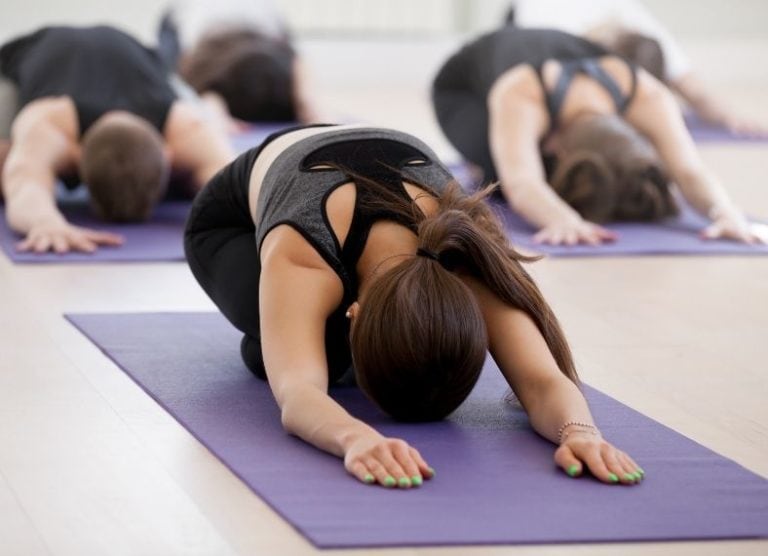Mindfulness for Beginners: Your Guide to Finding Daily Calm
In today’s hectic world, where it feels like we’re constantly juggling a million things, finding moments of peace can seem impossible. If you’ve ever felt stressed, anxious, or just overwhelmed by daily life, you’re not alone. Mindfulness could be the gentle nudge you need to slow down and reclaim that sense of calm. Let’s dive into what mindfulness is, why it’s important, and how you can easily weave it into your everyday routine to experience more daily calm.
What is Mindfulness?
At its essence, mindfulness is about being fully present in the moment. It’s about tuning into your thoughts, feelings, and physical sensations without jumping to conclusions or judgments. Instead of letting your mind race through the day’s to-do list or worry about what’s next, mindfulness encourages you to simply observe what’s happening right now. This shift can lead to greater clarity and peace in your life.
A Bit of Background
Mindfulness has deep roots in ancient Buddhist practices, where meditation was used to cultivate awareness and compassion. Over the years, it has made its way into various fields, from psychology to wellness. Programs like Mindfulness-Based Stress Reduction (MBSR) have shown that mindfulness can effectively reduce stress and improve well-being. It’s all about helping you find that daily calm amidst the chaos.
Why Should You Practice Mindfulness?
Incorporating mindfulness into your daily life offers a ton of benefits:
- Stress Reduction: By focusing on the present moment, you can significantly lower your stress levels and create a sense of daily calm.
- Better Focus: Regular mindfulness practice can help improve your concentration, making it easier to tackle tasks without getting sidetracked.
- Emotional Balance: Mindfulness helps you become more aware of your emotions, allowing you to respond thoughtfully instead of reacting impulsively.
The benefits of meditation are vast, and they can profoundly change how you experience daily life.

Key Components of Mindfulness Therapy
Mindfulness therapy involves several essential elements that can enhance your emotional well-being:
- Mindful Awareness: This is all about paying attention to your thoughts and feelings without judgment. By recognizing your habitual responses, you can cultivate a greater sense of daily calm.
- Self-Compassion: Mindfulness encourages you to treat yourself with kindness, especially during tough times. This self-compassion is vital for maintaining daily calm.
- Present-Moment Focus: A big part of mindfulness is learning to keep your attention right here, right now. When your mind wanders (and it will!), gently guiding it back helps sustain that feeling of calm.
- Non-Reactivity: Mindfulness teaches you to notice your thoughts and feelings without immediately reacting. This practice leads to better emotional regulation and a deeper sense of daily calm.
- Mindful Movement: Gentle activities like yoga or even stretching can enhance mindfulness. They help you connect with your body and release physical tension, contributing to daily calm.
Why is Mindfulness Sometimes Hard?
Many people find mindfulness challenging for a few reasons:
- A Busy Mind: With so many distractions, it’s common for thoughts to race, making it tough to stay present and achieve that daily calm.
- Impatience: Mindfulness isn’t a quick fix; it takes time and practice. If you don’t see immediate results, it’s easy to feel frustrated.
- Facing Discomfort: Engaging with your thoughts and feelings can be uncomfortable. It’s human to want to avoid distressing emotions, but mindfulness encourages you to confront them.
- Cultural Norms: Society often pushes us to be busy and productive, which can make it hard to embrace a practice that encourages slowing down.
Getting Started with Mindfulness

Create a Mindfulness Space
Setting aside a specific spot for mindfulness can really enhance your practice. Find a quiet, comfortable area in your home or outside where you feel at ease. It doesn’t have to be fancy; even a cozy corner can become your sanctuary for daily calm.
Mindful Breathing
As a beginner, it’s best to keep your practice manageable. Aim for just 5 to 10 minutes of mindfulness each day. As you grow more comfortable, you can gradually increase the time. The key is to make it feel accessible and enjoyable!
One of the simplest ways to practice mindfulness is through mindful breathing. Here’s how to do it:
- Get Comfortable: Sit or lie down in a position that feels good for you.
- Close Your Eyes: If it feels right, close your eyes to minimize distractions.
- Focus on Your Breath: Take a deep breath in through your nose, feeling your belly rise. Exhale slowly through your mouth. Concentrate on the rhythm of your breath—it’s a straightforward way to create daily calm.
- Notice Your Thoughts: When thoughts pop up, just acknowledge them without judgment and gently redirect your focus back to your breath. This helps your mind settle into that sense of calm.

Try a Body Scan
A body scan is a great way to connect with how your body feels. Here’s a simple method:
- Get Comfortable: Lie down or sit comfortably, and take a few deep breaths.
- Start at Your Feet: Bring your attention to your toes. Notice any sensations, whether they’re warm, cool, tense, or relaxed.
- Move Upward: Gradually shift your focus to your feet, ankles, calves, and continue all the way to the top of your head.
- Acknowledge Sensations: If you notice discomfort, just recognize it without trying to change it. This practice helps you tune into your body and encourages daily calm.
Mindful Walking
Walking mindfully is a fantastic way to incorporate mindfulness into your routine. Here’s how:
- Choose a Quiet Area: Find a peaceful location for your walk.
- Set an Intention: Before you start, think about what you want to focus on—being present, appreciating nature, or simply enjoying the movement.
- Pay Attention to Your Steps: Notice the feeling of your feet touching the ground and the rhythm of your breath. When your mind wanders, gently bring it back to your steps, nurturing that daily calm.
Use Mindfulness In Your Daily Life
Apps and Podcasts
Tech can actually support your mindfulness journey. There are plenty of apps that offer guided meditations and mindfulness exercises for beginners. Some popular ones include:
- Headspace: This app is perfect for newcomers, offering various guided meditations to help you find daily calm.
- Calm: Known for its soothing music and bedtime stories, Calm also has meditation sessions to help you unwind.
You can also find mindfulness playlists on Spotify and podcasts that delve into mindfulness topics. These resources can enhance your meditation experience, helping you embrace that daily calm.
Overcoming Common Challenges
As you dive into mindfulness, you might encounter some bumps along the way. Here are a few common challenges and how to tackle them:
Dealing with Restlessness
If you find it hard to sit still, you’re not alone! Try incorporating mindful walking or gentle yoga into your practice. Moving your body can help channel that restless energy while still promoting daily calm.
Managing Racing Thoughts
It’s totally normal for your mind to race with distractions. Instead of fighting those thoughts, acknowledge them and gently redirect your focus back to your breath or the present moment. Allowing your mind to wander can actually deepen your sense of daily calm.
Navigating Impatience
Mindfulness takes time to develop. Be patient with yourself. Each moment you spend practicing is valuable, so celebrate the small victories and don’t be discouraged if it feels challenging at first.
Bringing Mindfulness into Daily Life
To truly benefit from mindfulness, try integrating it into your daily routine. Here are some simple ideas:
Mindful Mornings
Start your day with a few moments of mindfulness. This could be through meditation, deep breathing, or simply enjoying your morning coffee while really savoring its flavor and aroma. This sets a positive tone for the day and cultivates that daily calm.
Mindful Commuting
Transform your commute into a mindfulness opportunity. Whether you’re driving, walking, or using public transport, pay attention to your surroundings and your breath. This can turn a stressful commute into a peaceful practice, enhancing your daily calm.
Evening Reflection
End your day with a mindfulness practice. Reflect on what you experienced, acknowledge your feelings, and express gratitude for something good that happened. This can help you unwind and promote restful sleep at night, reinforcing your sense of daily calm.
Connect With Us Now
Reach out to us now for immediate support, or let us know the best time to contact you through our confidential callback service. Your journey to healing is just a conversation away.
Conclusion
Mindfulness is a powerful tool that can help you enhance your well-being and navigate life’s complexities with greater ease. Remember, mindfulness isn’t a destination; it’s a continuous journey. Start small, be kind to yourself, and gradually weave mindfulness into your daily routine. With time and practice, including mindfulness meditation for beginners, you’ll find that mindfulness becomes a natural part of your life.
Embrace this journey, and enjoy all the benefits of meditation. By connecting more deeply to the present moment, you’ll cultivate peace, resilience, and joy that will serve you well wherever you go. Whether you’re just starting with meditation for beginners or looking to deepen your practice, every moment spent in mindfulness brings you closer to that much-desired daily calm.








